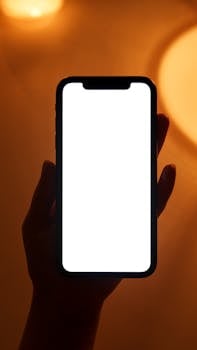
Thinking about buying an iPhone? Don't get scammed! This guide will help you quickly identify a counterfeit iPhone and ensure you're getting the real deal.
Spotting a Fake iPhone: Your Guide to Authenticity
So, you're about to buy an iPhone. Exciting! But before you hand over your hard-earned cash, it's crucial to make sure you're getting a genuine Apple product. Counterfeit iPhones are surprisingly common, and they can look deceptively real. This guide will walk you through the key steps to verify your iPhone's authenticity.
Introduction
The allure of a discounted iPhone can be strong, but be wary. Scammers often prey on unsuspecting buyers by offering fake iPhones at bargain prices. These fakes are often made with inferior components, have limited functionality, and lack Apple's warranty and support. The good news is that with a little knowledge, you can easily spot a fake and avoid a costly mistake.
Physical Inspection: First Impressions Matter
The first step in verifying an iPhone's authenticity is a thorough physical inspection. Pay close attention to the following details:
Build Quality and Materials
Genuine iPhones are known for their premium build quality. The materials used are high-grade, and the assembly is precise. Look for the following:
- Seamless Construction: Check for any gaps or uneven seams between the screen and the body. A real iPhone will have a perfectly flush fit.
- Material Quality: The back of the iPhone should feel smooth and solid. Avoid models with flimsy or plastic-feeling backs (unless it's a specific model like the iPhone 5c, but those are less commonly faked these days).
- Weight: Fake iPhones often weigh significantly less than their genuine counterparts. Look up the official weight specifications for the model you're examining and compare.
Ports and Buttons
Take a close look at the ports and buttons on the iPhone:
- Lightning Port (or USB-C on newer models): The Lightning port (or USB-C) should be centered and neatly aligned. Check for any rough edges or signs of poor craftsmanship.
- Button Functionality: Test all buttons (power, volume, mute switch). They should feel responsive and click smoothly. Stiff or unresponsive buttons are a red flag.
- Speaker Grilles: The speaker grilles should be clean and precisely cut. Check for any imperfections or misaligned holes.
Apple Logo and Markings
Inspect the Apple logo and any other markings on the back of the iPhone:
- Logo Quality: The Apple logo should be crisp, clear, and perfectly centered. A blurry or poorly defined logo is a sign of a fake.
- Model Number and IMEI: Look for the model number and IMEI (International Mobile Equipment Identity) printed on the back of the iPhone or in the SIM tray. We'll use the IMEI later to verify the device.
Software and Functionality: Digging Deeper
Once you've completed the physical inspection, it's time to dive into the software and functionality:
Boot-Up Sequence
Power on the iPhone and observe the boot-up sequence. A genuine iPhone will display the Apple logo followed by the setup screen. A fake iPhone might show a different logo or a distorted image.
Operating System
- iOS vs. Android: This is the biggest giveaway. Real iPhones run iOS. Fake iPhones often run a modified version of Android that mimics the look of iOS. If you see the Android operating system, it's definitely a fake.
- Accessing Settings: Navigate to the Settings app. On a real iPhone, you'll find options like "General," "Display & Brightness," and "Cellular." If the settings menu looks different or is missing options, it's likely a fake.
Camera Quality
Test the camera by taking a few photos and videos. Genuine iPhones have excellent camera quality. Fake iPhones often have cameras with poor resolution, blurry images, and inaccurate colors.
App Store Access
Try to access the App Store. A real iPhone will seamlessly connect to the App Store. A fake iPhone might redirect you to a third-party app store or display an error message.
IMEI Verification: The Ultimate Test
The IMEI is a unique identifier for your iPhone. You can use it to verify the device's authenticity and warranty status.
Finding the IMEI
- Dial #06#: Dialing #06# on the iPhone will display the IMEI on the screen.
- Settings App: Go to Settings > General > About. The IMEI will be listed there.
- SIM Tray: The IMEI is also printed on the SIM tray.
Using the IMEI to Verify
Once you have the IMEI, you can use it to verify the iPhone's authenticity on Apple's website or through a third-party IMEI checker. Here's how:
- Apple's Coverage Checker: Go to Apple's official support website and enter the IMEI to check the device's warranty and coverage status. If the IMEI is invalid or doesn't match the iPhone model, it's a fake.
- Third-Party IMEI Checkers: There are many reputable IMEI checker websites online. These websites can provide detailed information about the iPhone, including its model, manufacturing date, and carrier lock status.
Conclusion
By following these steps, you can significantly reduce your risk of buying a fake iPhone. Remember to thoroughly inspect the device, test its functionality, and verify the IMEI before making a purchase. If something seems too good to be true, it probably is. Trust your instincts, and don't hesitate to walk away from a deal that seems suspicious. Stay vigilant and enjoy your genuine iPhone!
